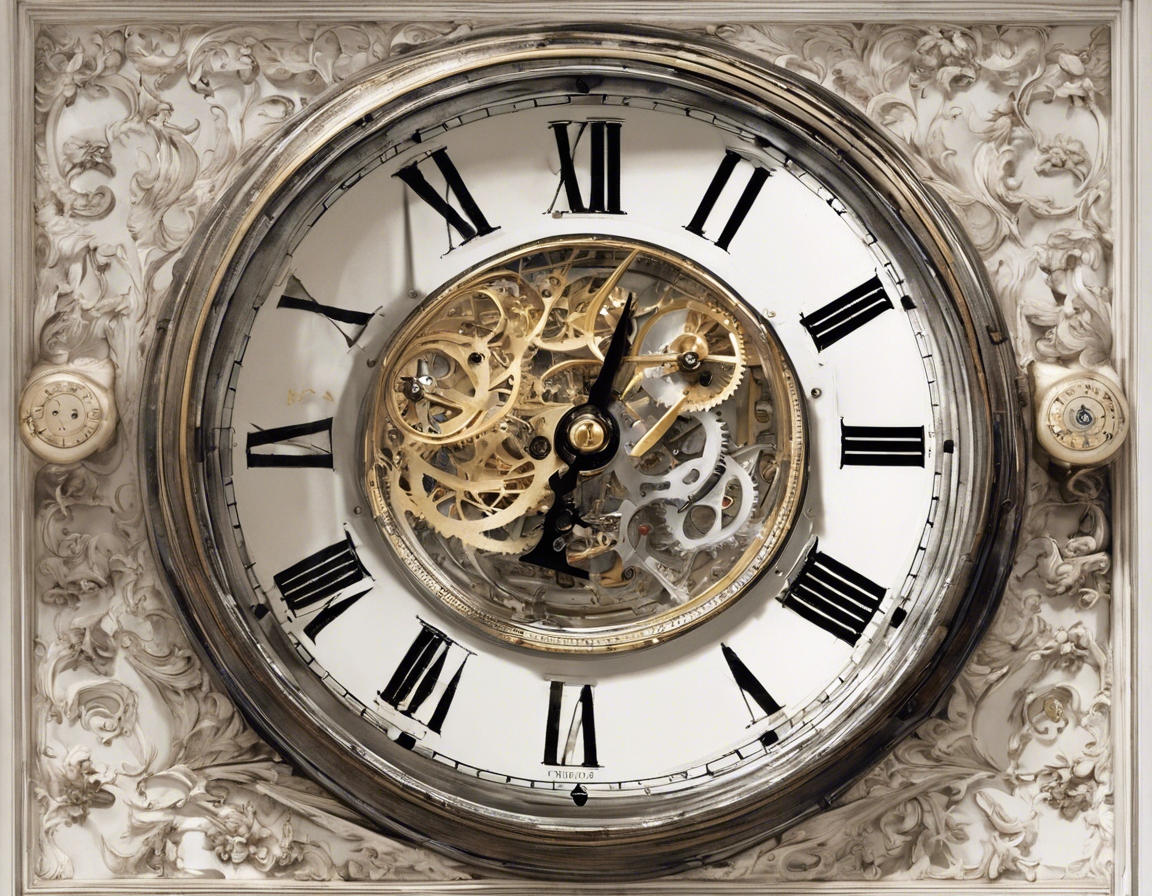Have you ever stopped to think about the intricacies of a clock’s minute hand and its length? While often overlooked, the minute hand plays a crucial role in helping us keep track of time accurately. In this article, we will delve into the significance of a clock’s minute hand length, its impact on timekeeping, and how variations in length can affect the overall aesthetics and functionality of a clock.
The Importance of Clock Minute Hand Length
The minute hand of a clock is responsible for indicating the minutes that have passed in a given hour. Its length is directly proportional to the accuracy with which we can gauge the time. A longer minute hand allows for more precise time reading, especially on larger clocks where the distance between hour markers is greater.
Factors Influencing Minute Hand Length
Several factors come into play when determining the appropriate length of a clock’s minute hand:
1. Dial Size
- Larger dials require longer minute hands to ensure visibility and readability from a distance.
2. Aesthetics
- The minute hand’s length should be balanced with the hour hand and overall design of the clock for visual appeal.
3. Functionality
- Longer minute hands are crucial for clock mechanisms that demand high accuracy and precision, such as in train stations or airports.
Impact of Minute Hand Length on Timekeeping
The length of a clock’s minute hand directly impacts its timekeeping capabilities. A longer hand allows for more accurate time reading, reducing the margin of error when determining the minutes that have elapsed. Clocks with shorter minute hands may result in less precise time readings, especially when minute markers are closely spaced.
Customizing Minute Hand Length
Clockmakers and manufacturers often offer customization options for minute hand lengths to cater to specific preferences or requirements. This flexibility allows for the creation of unique and personalized timepieces that stand out in terms of design and functionality.
Effect of Minute Hand Length on Clock Design
The aesthetic appeal of a clock is significantly influenced by the length of its minute hand. Whether opting for a classic, minimalist, or avant-garde design, selecting the right minute hand length is essential for achieving the desired look and feel of the clock.
Examples of Minute Hand Length Variation in Clock Designs:
- Traditional Clocks: Classic clocks often feature longer minute hands for a timeless and elegant appeal.
- Modern Clocks: Contemporary designs may incorporate shorter minute hands for a sleek and minimalist look.
- Artistic Clocks: Unique and artistic clocks may experiment with exaggerated or unconventional minute hand lengths for a creative touch.
FAQs (Frequently Asked Questions)
1. Does the minute hand length affect a clock’s accuracy?
- The minute hand length plays a role in enhancing the readability and precision of a clock but does not directly impact its accuracy.
2. Can I customize the minute hand length of my clock?
- Many clockmakers offer customization options, allowing you to select a minute hand length that suits your preferences and requirements.
3. Why are minute hands longer than hour hands on clocks?
- Minute hands are longer to accurately point to the minute markers on the clock face, which are typically placed closer together than hour markers.
4. How does the minute hand length vary in wall clocks versus wristwatches?
- Wall clocks often have longer minute hands for visibility from a distance, while wristwatches have shorter minute hands for compactness and ease of movement.
5. Does the material of the minute hand affect its length?
- The material of the minute hand does not directly determine its length, but it can influence the overall weight and balance of the clock’s hands.
In conclusion, the minute hand length of a clock plays a fundamental role in both its functionality and aesthetics. By understanding the significance of selecting an appropriate minute hand length, clock enthusiasts and designers can create timepieces that not only keep accurate time but also make a statement in terms of style and design.


